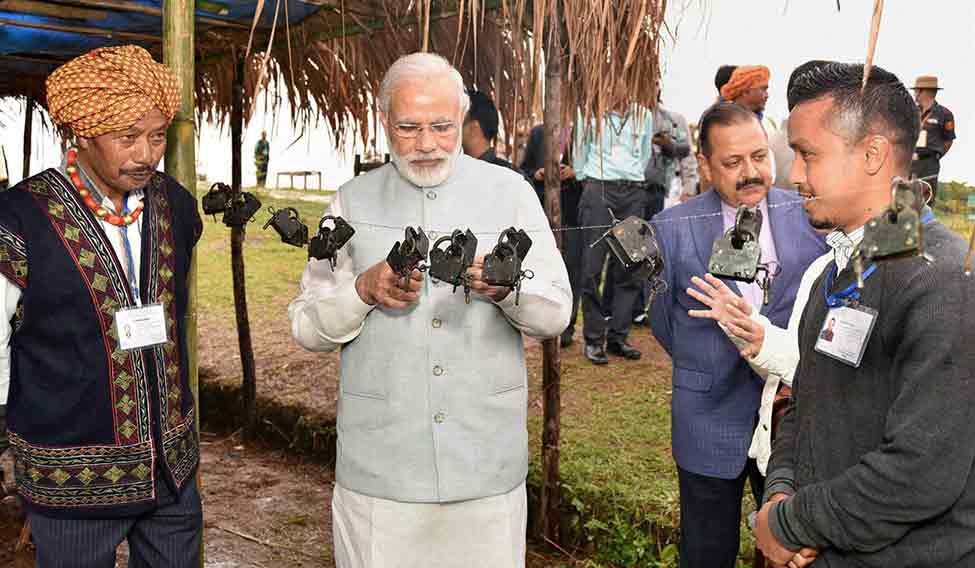May is a month of haunting heat in New Delhi. There are dust storms and, despite the white skies, the trees are heavy with flowers. The apocalyptic climate serves as a fitting backdrop to political upheaval.
Two summers ago, I witnessed one: After a long campaign, Narendra Modi and his BJP won the first outright majority in India’s Parliament since 1984. It had come at the end of ten years of the Congress rule, the last five of which were marred by corruption allegations and an economy that left many people frustrated. I have followed campaigns since I was a child—my mother is a journalist—and Modi’s election was one of the most hopeful of my lifetime.
What Modi understood was that India’s conception of itself had changed. It was not yet a middle-class country, but it had begun to think of itself as one. When I first heard Modi speak in September 2013, what surprised me most was the change in the average voter. A new kind of person had emerged, young and energetic, representing the happy conjunction of denim, phone and television. For many people I spoke to, these were their prized possessions. (They didn’t have cars or houses.) Their restlessness revealed a hunger and they had none of the fatalism of old India.
“They are poor but their self-image is not of being poor,” Yogendra Singh, a sociologist, said of the BJP's supporters in an interview earlier this month. Modi spoke directly to their ambition. They didn’t want the populism of the Congress. They didn’t want handouts; they wanted jobs.
Modi was the first Indian politician to speak seriously of prosperity. In a country with a socialist past whose first prime minister is said to have described profit as “a dirty word”, Modi made making money sexy. He has a way of explaining complex economic ideas in direct terms. “I don’t want my cotton grower to wander from place to place, trying to sell his cotton,” he said in an address to the Sri Ram College of Commerce in 2013. “I have a ‘five F’ formula: farm to fibre, fibre to fabric, fabric to fashion, fashion to foreign.”
It was revolutionary. No candidate for prime minister since economic liberalisation began in 1991 had bothered to explain the global economy to the average Indian voter, to connect the dots in its supply chain, to speak of its possibilities. The Congress, famous for its “reforms by stealth”, had made liberalisation seem like something done at the expense of the poor. Modi sold it as essential to the fight against poverty. The response was electrifying.
Two years later, India is still waiting to turn a corner. At times it can feel close, but the socialist mindset still has an outsized influence.
What worries me is not the state of the economy, or the slow pace of reform. It’s not the government’s failure to privatise large public companies like Air India, even though Modi has said that “government has no business to be in business”. It’s not that the “retroactive tax”, which allows the government to collect back capital gains taxes and has been used to hound foreign companies, remains in place, belying the BJP's promise of welcoming foreign investment. It’s not that major pieces of legislation reforming the economy now seem permanently stuck. It’s not that job growth is slower than it should be.
My deeper fear is that Modi lacks a free-marketer’s natural suspicion of the state. He seems wedded to the third-way politics he developed in Gujarat, where he was chief minister from 2001 to 2014, in which the machinery and assets of an overburdened socialist state are left intact, but the bureaucracy is cleansed of inefficiency and corruption. Not surprisingly, all that has been achieved in his first two years in office is clean government at the top, while the rest remains more or less unchanged.
This has disappointed many on the economic right who supported Modi in 2014, hoping he would be India’s Ronald Reagan or Margaret Thatcher. Sadanand Dhume, a free-market advocate, conceded in The Wall Street Journal in March that the prime minister was a “cautious tinkerer” rather than “a committed reformer”.
A young businesswoman who supports the prime minister put it well. “He goes to the west and sees prosperity in terms of jobs and physical infrastructure, which he is trying to emulate,” she wrote to me in an email. “But he fails to see the invisible underpinnings of western civilisation, which are political and economic liberty.”
Modi’s election unleashed passions that only a roaring economy can contain. As I travelled through India recently, from Varanasi to Mumbai to Delhi, I was moved by how much people still trust the prime minister. When I asked them what happened to the “good days” he had promised, they invariably replied, “It will take time.” But I sense an anticipation that could turn sour.
The scorching capital city is full of news of BJP victories in places where the party rarely wins, including socialist bastions like Kerala and Bengal. It seems like a clear message to the man who promised an alternative to India’s toxic socialism that he should stay the course. For decades, the old socialist state preyed on the people it was meant to serve. The rage that developed against it propelled Modi forward. It was not a mandate for gentle reform, but for profound change from the ground up.
Aatish Taseer is the author, most recently, of the novel The Way Things Were.






